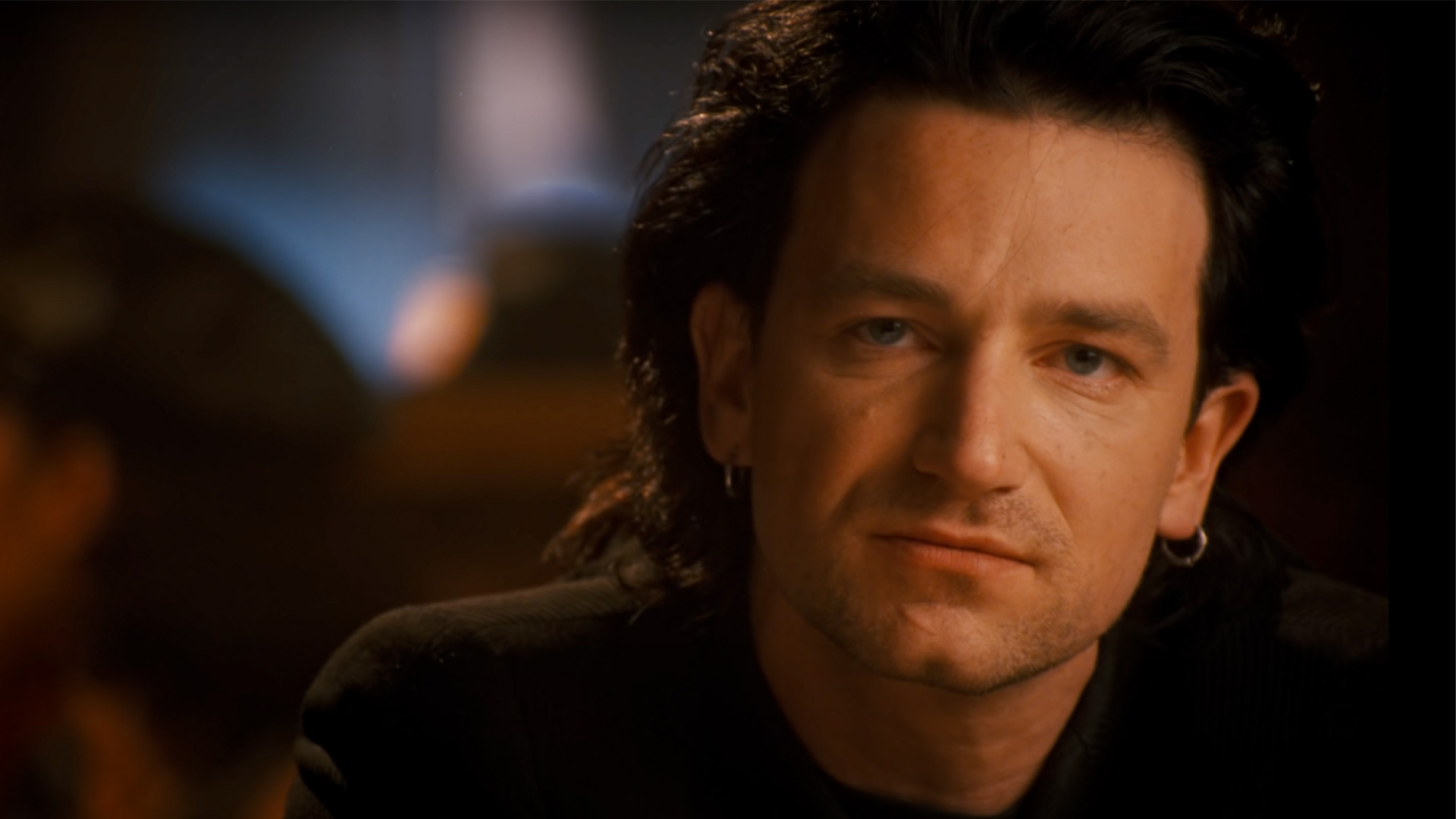Since its release 30 years ago on the Grammy-winning album Achtung Baby, U2's powerful One has become an unquestioned modern classic. It is a staple of both pop culture and the band's live show. And since the Irish quartet has three of the top 13 grossing tours of all time, including the second biggest tour ever, 2009 - 2011's U2 360° Tour, the song has been played hundreds of times in huge settings, often to 50,000 people or more.
But there are two performances that really stand out according to guitarist Edge. The first was one the band did live. The second though was one they were not even there for.
"When we performed at Madison Square Garden in the period after 9/11 we were the first band of our kind of size to perform in the city," he recalls. "And we were trying to figure out how we could honour the victims of 9/11 so we thought, 'A roll call of names, it's obvious.' So we got our production designer and show designer, really got together with our people, and we had the screens because it was that era of video reinforcement screens. So we put the roll call of names and we performed at Madison Square Garden. And it was the most unbelievable reaction."
Unbeknownst to Edge, frontman Bono, bassist Adam Clayton and drummer Larry Mullen Jr., in the sold-out crowd of nearly 21,000 fans there were several men and women who'd been on the frontlines of the fallen twin towers of the World Trade Center.
As Edge recalls, the song and the show understandably became about the heroes fighting to save lives from 9/11. "There were a lot of first responders there as it turned out, we didn't know that. And I guess they just understood that we were trying to find some way to respond," he says. "So they all came up after the show, and I think One may well have been the last song. And we just let them come on stage, dozens of them, and gave them the stage and they took the microphone and they all just told their stories and it was so cathartic. It was just one of those unbelievable things to be part of. So that that's hard to beat in terms of a of a moment where song just fits a situation, which could only have been brought about by a song."
That is, though it may sound cliche or corny, the true power of music. To unite and uplift 21,000 people hurting, grieving, suffering, and mourning loved ones, their city, their innocence. And One is one of the few songs in history that has that as, Edge puts it, "Gravitas."
"Nothing else could have unlocked that moment and created that platform for that sort of cathartic experience for these first responders but also for the whole city and certainly for us. We were so humbled by it. So that would be a big moment," he says.
Then the second performance, the one the band wasn't even part of, is also true testament to the song's incredible emotional worldwide reach. It came after the tragic murder in 2020 of French school teacher Samuel Paty, who was killed following reports he showed cartoons of the Prophet Muhammad to his students.
"The song was used in a funeral when the teacher who had been killed in Paris, because he had opened up a conversation about prejudice and the prophet Mohammed, and some of his pupils who were Muslims got offended," Edge says. "And I think he had mentioned Charlie Hebdo and that whole issue, which is huge in France. So this poor teacher was murdered by a kid and his family asked that One would be used at this funeral and they play the entire song. But I think it was the military were the honouree coffin bearers and they took it as a challenge. So they worked out this whole choreography to the to the song and you see the entire like French cabinet and it's just it is incredible to see. It goes on and on and on and they go through the entire song. And it became actually the sort of the centrepiece of the funeral service and we're like, 'Oh wow.'"
For Edge, to see a song they wrote 30 years ago take on that sort of role in the life of anyone, let alone Samuel Paty, is unbelievably humbling. "And again it's utterly unlinked to have something that you worked on in your little small studio all those years ago, taking on that sort of role for people and that significance," he says.
That the song would take on that role during the memorial for Samuel Paty is very fitting in a way though. It was born in part out of honouring another fallen activist Edge explains.
"When we were working on the lyric we were very inspired by a New York artist called David Wojnarowicz," he says. "And David, as well as being as a cutting edge experimental artist, was one of the first people to die from AIDS. So as Bono's working on the lyric, we're kind of summoning up an imagined conversation that could have happened to any one of us had we been in David's shoes. But it's, and I know everything, Bono, a lot of his personal relationships or his relationship with his father went into that lyric so there's this conflict in it."
In Edge's estimation, that conflict Bono placed in the lyrics is a big part of what makes the song so special and enduring after three decades.
"It's not happy clappy, 'Let's all hold hands around the campfire' lyric at all. Actually there's some deep hurt is revealed in that lyric and that's why it's so fascinating when people tell me, 'We played at our wedding.' I'm going, 'Did you listen to the lyric?'" he says laughing. "This is not a perfect harmonious sort of situation. This is like overcoming deep hurt, deep historic problems to reach in some sort of defiant, heroic way towards this ideal of unity against all odds. That's, I suppose, why it still has that power and that connection."
This excerpt comes from Anthems We Love: 29 Iconic Artists on the Hit Songs That Shaped Our Lives by Steve Baltin, out October 25 on Harper Horizon. Pre-order here.

